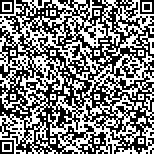| 摘要: |
| 本文记叙了国内外首次以大型商品化热浸锌锚链为研究对象的海港试验结果,跟踪记录了其4年的腐蚀与生物污损发展过程。分别于2013年7月、2014年7月、2015年7月和2016年7月将试验锚链提出海面,对出现在锚链上的全部附着生物进行刮取、分类、鉴定、称重,清洗锚链的表面,检查锈点,并对热浸锌锚链表面测厚,照相记录跟踪全过程。试验结果表明:裸钢腐蚀严重,锈层在2~3mm,腐蚀产物易成片脱落,形成大小不等的腐蚀坑,最大坑深3mm左右;热浸锌锚链未出现明显腐蚀点,大气区锌层腐蚀速率约10μm/a,水下区锌层腐蚀速率约20~70μm/a,但在两个链环连接处出现磨蚀锈斑;耐蚀性在不同区带中表现为水上链>水下链;热浸锌锚链表面的污损生物数量少于未浸锌锚链,随着时间延长,热浸锌锚链表面污损生物逐年增多,其中优势生物为海鞘(Ascidians)、苔藓虫(Bryozoans),其次是贻贝(Mytilus sp.)、牡蛎(Ostreidae sp.)、石莼(Ulva sp.),曾出现南方污损生物种,如翡翠贻贝(Perna viridis)。2013~2014、2014~2015、2015~2016三年锚链单位面积上污损生物的重量分别为1257.6、1454.6和21304.0g/m2。污损生物重量的增加大大增加了锚链的磨蚀程度,为锚链腐蚀失效埋下了隐患。本研究为海洋工程锚链设计或应用提供了宝贵的科学依据。 |
| 关键词: 热浸锌 锚链 腐蚀 海港试验 胶州湾 |
| DOI:10.12036/hykxjk20170221001 |
| 分类号:TG174 |
| 基金项目:国家自然科学基金(59471054、59071040);深圳中广核工程设计有限公司委托课题(K-A2015.054)。 |
|
| Research on the Corrosion Resistance of Domestic Hot-Dip Galvanizing Chain (I): Test for Hot-Dip Galvanizing Chain at Sea Port |
|
MA Shi-De1,2, WANG Zai-Dong3, LIU Hui-Lian1, LIU Xin4
|
|
1.Key Laboratory of Marine Environmental Corrosion and Bio-fouling, Institute of Oceanology, Chinese Academy of Sciences, Qingdao 266071, China;2.China Association of professors of the old marine anti-fouling and anti-fouling Specialized Committee, Qingdao 266071, China;3.Qingdao Dongqi mechanical equipment Co., Ltd, Qingdao 266071, China;4.Qingdao University of Science and Technology, Qingdao 266042, China
|
| Abstract: |
| Harbor experiments were conducted for the first time at home and abroad for commercial hot-dip galvanized chains for nearly four years; and the development process of corrosion and biofouling were recorded accordingly. Tests were carried out in July 2013, July 2014, July 2015, and July 2016, respectively. The anchor chains were taken out of the sea water, and the organisms attached to the anchor chains were scraped, classified, identified, and weighed. Then the anchor surfaces were cleaned to check the rust. Finally, the thicknesses of the zinc layers present on the chain surfaces were measured. The whole process was photographed. The results of harbor tests show that the bare steel underwent severe corrosion, and the rust layer was approximately 2~3 mm thick. The corrosion product fell off even upon touching slightly. Corrosion pits of different sizes were observed, with the maximum pit depth being approximately 3 mm. The hot-dip galvanized chain did not show apparent corrosion, and that the corrosion rate of the zinc layer was approximately 10 μm/a in the atmosphere and 20~70 μm/a in the seawater. However, abrasion was observed at the junction of the two chain rings; the corrosion-resistance of the anchor chains in the atmosphere is higher than those in the sea water. The number of fouling organisms present on the surface of the hot-dip galvanized chain was less than that on the non-dip galvanized anchor chains, and the number of fouling organisms on the hot-dip zinc chain increased year by year. The dominant organisms were ascidians, bryozoans, mussels, oysters, and ulva sp., and southern fouling species, such as the Perna viridis was present. The weight of fouling organisms per unit area on the anchor chain was 1257.6 g/m2, 1454.6 g/m2, and 21304.0 g/m2 in 2013~2014, 2014~2015, and 2015~2016, respectively. The increase in the weight of the fouling organisms led to a great increase in the degree of abrasion; this creates a hidden danger of anchor corrosion. This study provided valuable scientific basis for the design and application of marine engineering. |
| Key words: Hot-Dip Galvanized Anchor chain Corrosion Harbor experiment Jiaozhou Bay |


